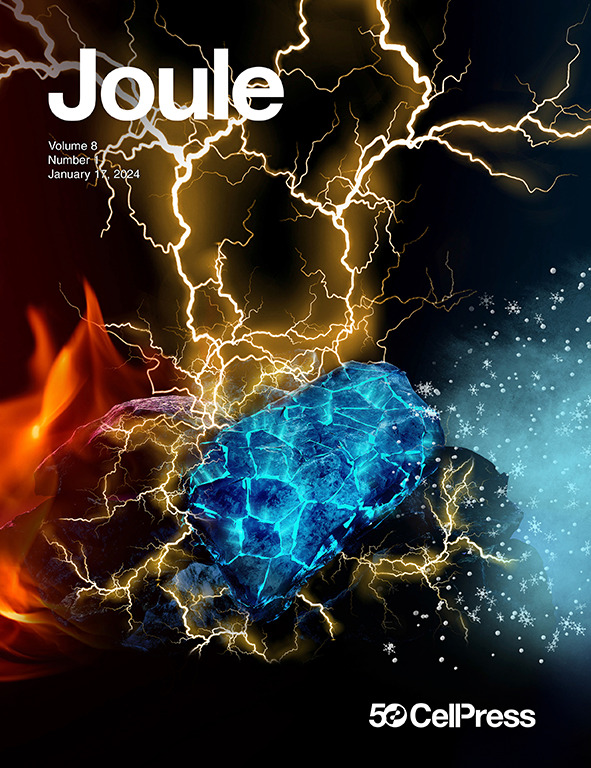钙钛矿光伏的闭环回收研究
IF 38.6
1区 材料科学
Q1 CHEMISTRY, PHYSICAL
引用次数: 0
摘要
在他们最近发表在《自然》杂志上的论文中,Gao及其同事报告了一种基于水的回收工艺,该工艺能够从热降解的钙钛矿太阳能电池中回收所有功能成分,包括吸收材料、电极和传输层。他们的方法从旧设备中再生高纯度的钙钛矿,使新电池的效率超过23%,与原始设备相当。本文章由计算机程序翻译,如有差异,请以英文原文为准。
Toward closed-loop recycling of perovskite PV
In their recent paper in Nature, Gao and colleagues report an aqueous-based recycling process capable of recovering all functional components from thermally degraded perovskite solar cells, including absorber materials, electrodes, and transport layers. Their method regenerates high-purity perovskites from aged devices, enabling new cells with efficiencies exceeding 23%, comparable to pristine devices.
求助全文
通过发布文献求助,成功后即可免费获取论文全文。
去求助
来源期刊

Joule
Energy-General Energy
CiteScore
53.10
自引率
2.00%
发文量
198
期刊介绍:
Joule is a sister journal to Cell that focuses on research, analysis, and ideas related to sustainable energy. It aims to address the global challenge of the need for more sustainable energy solutions. Joule is a forward-looking journal that bridges disciplines and scales of energy research. It connects researchers and analysts working on scientific, technical, economic, policy, and social challenges related to sustainable energy. The journal covers a wide range of energy research, from fundamental laboratory studies on energy conversion and storage to global-level analysis. Joule aims to highlight and amplify the implications, challenges, and opportunities of novel energy research for different groups in the field.
 求助内容:
求助内容: 应助结果提醒方式:
应助结果提醒方式:


